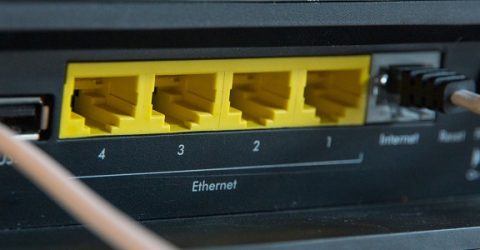The pros and cons of Powerline adaptors

There’s a common misconception that there are only two ways to connect a device to your home broadband hub – wirelessly, or via an Ethernet cable.
In fact, there’s a third way.
The electrical circuits in most homes provide a single link to every plug socket, effectively creating a network of pathways into each room.
Piping internet data into this network enables it to be accessed at any plug socket on the same circuit, with only a modest performance drop-off along the way.
And while internet connectivity from a mains plug might seem like a strange concept, millions of people have already embraced it.
Take the power back
A set of Powerline adaptors comprises two bulky plastic boxes with conventional three-pin plugs at the back.
Ethernet sockets are usually positioned on top of each adaptor.
The master unit should be plugged into the wall beside your broadband router, and connected to the hub using an Ethernet cable.
A satellite unit can then be positioned anywhere around the home, with its own Ethernet cable linking to a compatible device – a PC or Mac, a smart TV or games console, etc.
You don’t need to install any software, since the recipient device assumes it’s receiving a direct feed from the broadband router.
Indeed, the only installation required involves enabling Powerline adaptors to identify each other, in a similar manner to pairing Bluetooth devices.
The pros and cons of Powerline adaptors
So far, so simple. However, there are other factors to consider, especially if you live in a busy house – or an old one.
These are the main pros and cons of Powerline adaptors:
- Pro: Plug-and-play simplicity. Providing your base and satellite units are from the same manufacturer or range, a couple of button presses should activate the network.
- Con: They often use up two sockets. These bulky devices can obscure adjacent plugs, though pass-through adaptors feature a separate socket on their front for practicality.
- Pro: Faster, more stable connections than WiFi. This is useful for devices requiring optimal speeds, such as desktop computers, where WiFi dropouts might pose an issue.
- Con: They require single electrical circuits. Summerhouses and outbuildings may be on separate circuits, while some older houses have different circuits on each floor.
- Pro: Full portability. Because there’s no setup or installation process, adaptors can be endlessly moved around without affecting their performance or lifespan.
- Con: Interference is still an issue. Powerline performance may slow down as other electrical items draw power. Extension leads and surge protectors cause issues, too.
- Pro: They reduce WiFi demand. Every device connected via Powerline (several satellite units may operate as part of one network) frees up wireless capacity for other hardware.
- Con: Speed is lost along the way. While Powerline may be faster and more stable than WiFi, its performance will always be inferior to a hardwired Ethernet cable.






